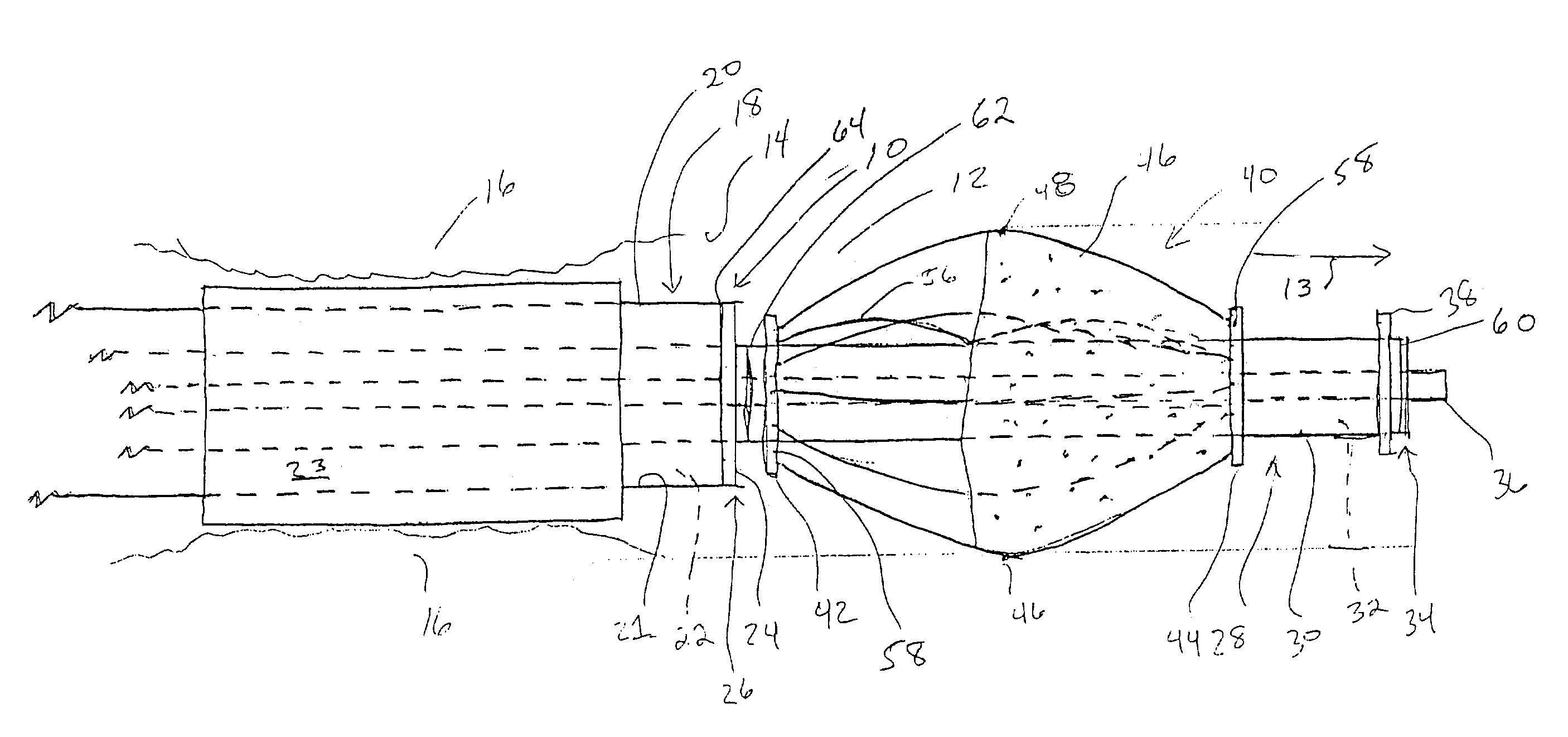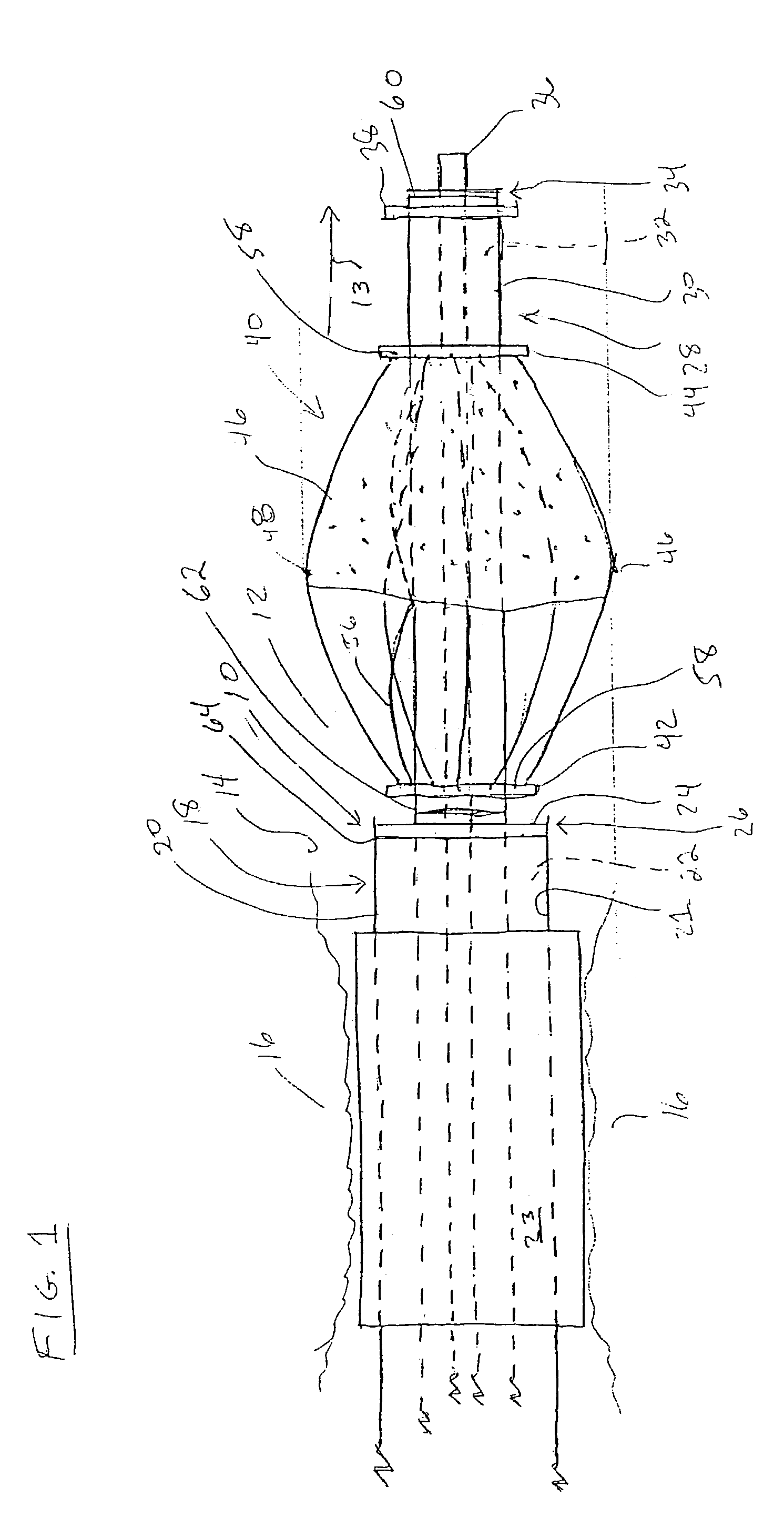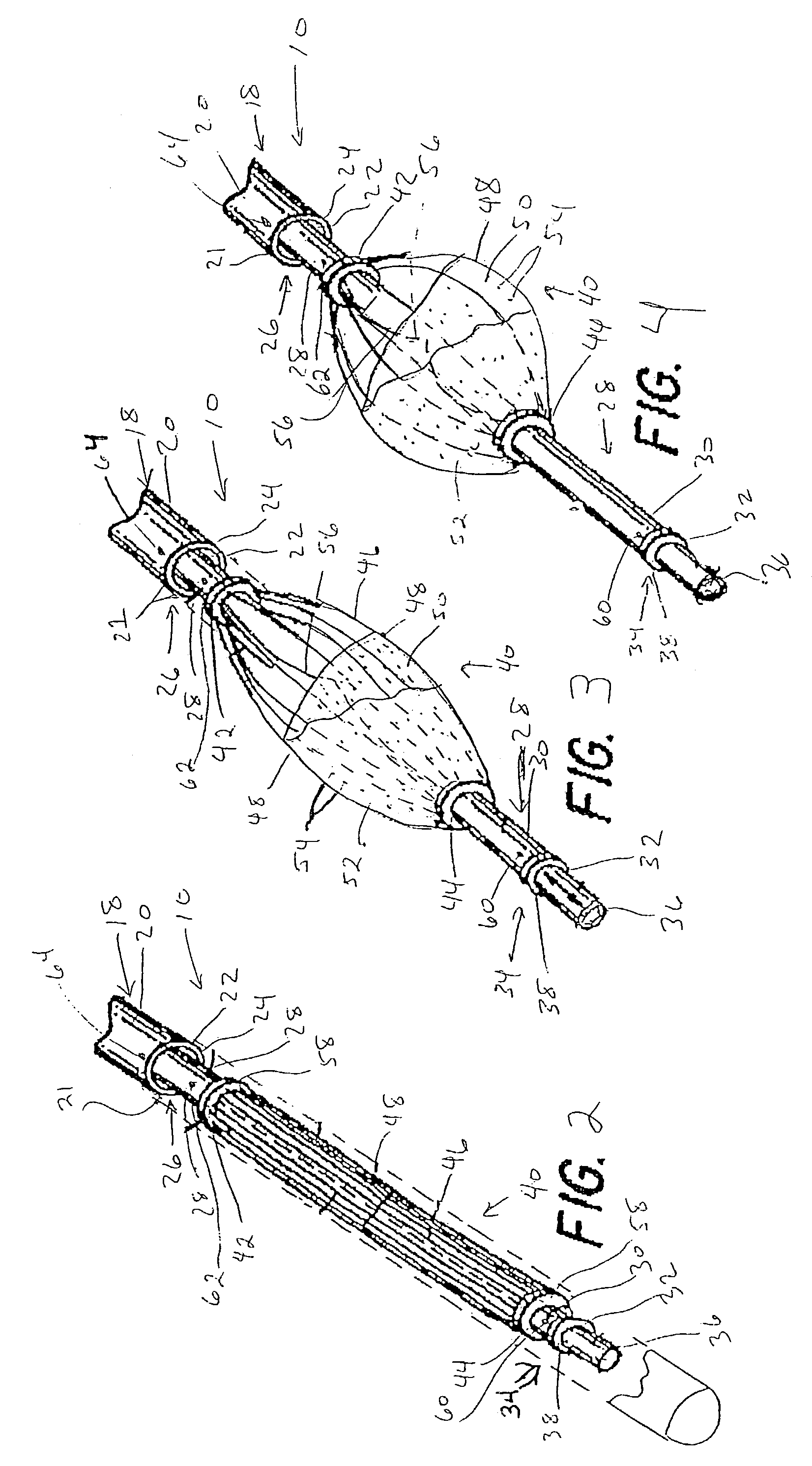Apparatus for trapping emboli
a technology of emboli and apparatus, applied in the field of filters, can solve the problems of reducing the flow of blood to the brain with obvious negative consequences, affecting the treatment effect, so as to prevent the separation of parts of the apparatus
- Summary
- Abstract
- Description
- Claims
- Application Information
AI Technical Summary
Benefits of technology
Problems solved by technology
Method used
Image
Examples
Embodiment Construction
[0028]Referring now to the drawings, wherein the showings are for the purpose of illustrating a preferred embodiment of the subject invention only and not for the purpose of limiting same, FIG. 1 shows a balloon catheter assembly designated generally by the numeral 10 positioned within an artery 12 having walls 14 wherein blood flows in the direction of arrow 13. Plaques 16 on walls 14 decrease the diameter of artery 12, and the purpose of the angioplasty procedure is to compress plaques 16 against walls 14 to increase the blood flow through artery 12. Catheter assembly 10 comprises a balloon catheter 18 having an outer wall 20, an inner wall 21, a lumen 22 and a distal end wall 24 at its distal end 26. (In this description, the term “distal” refers to the end of the catheter assembly deep within the patient's body and the term “proximal” refers to the end of the assembly outside of the patient's body). A balloon 23 is connected to outer wall 20 of catheter 18 and is equipped with s...
PUM
 Login to View More
Login to View More Abstract
Description
Claims
Application Information
 Login to View More
Login to View More - R&D
- Intellectual Property
- Life Sciences
- Materials
- Tech Scout
- Unparalleled Data Quality
- Higher Quality Content
- 60% Fewer Hallucinations
Browse by: Latest US Patents, China's latest patents, Technical Efficacy Thesaurus, Application Domain, Technology Topic, Popular Technical Reports.
© 2025 PatSnap. All rights reserved.Legal|Privacy policy|Modern Slavery Act Transparency Statement|Sitemap|About US| Contact US: help@patsnap.com



